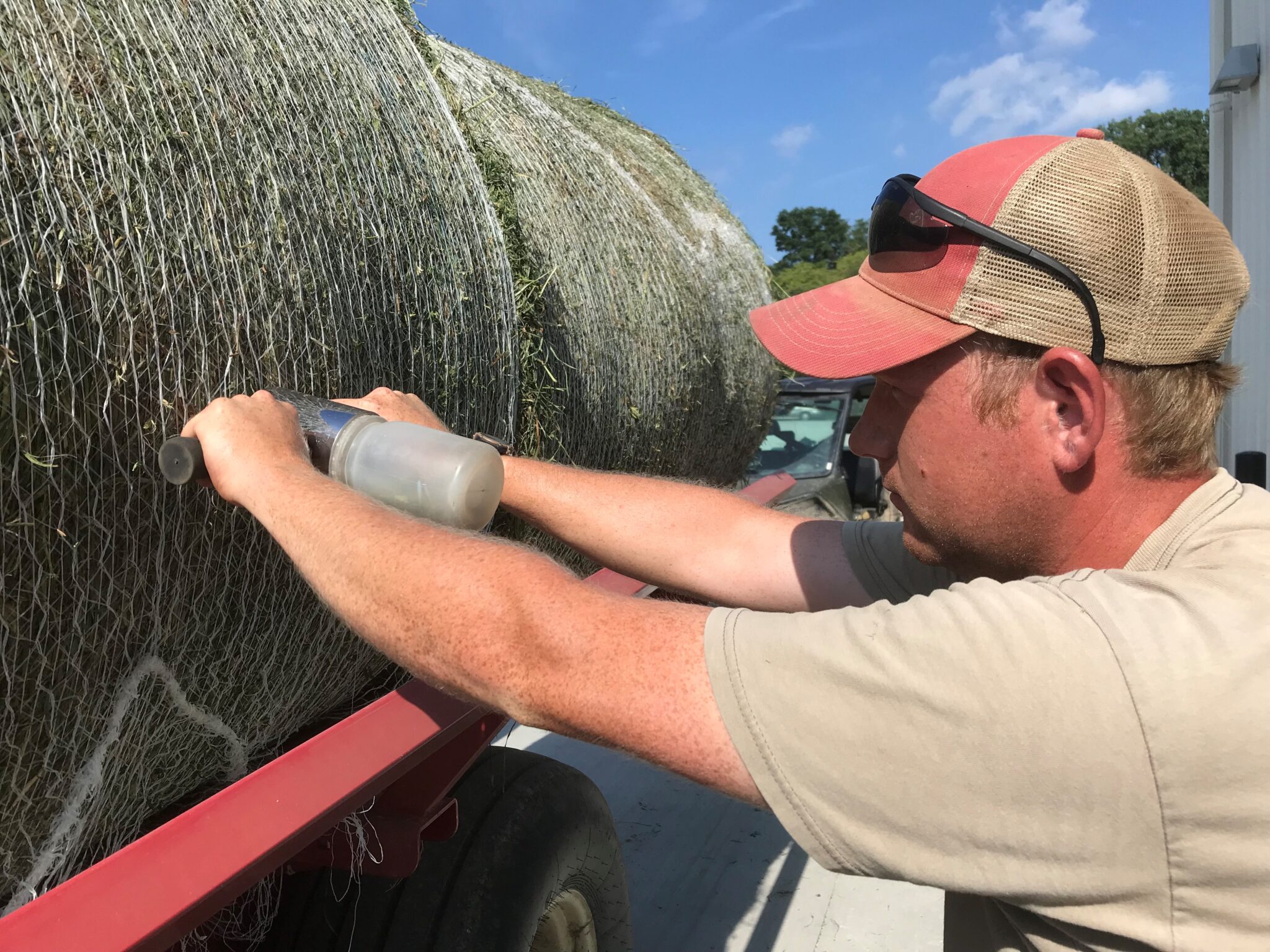Brad Shelton, Feldun-Purdue Agricultural Center Superintendent, informed me of high nitrate values in sorghum-sudangrass that were reported on a forage analysis. If sudangrass, sorghum-sudangrass, pearl millet, teff, or high level of Johnsongrass contamination in other forage was struggling with dry weather early in the summer and harvested as hay, baleage, or chopped silage before or right after rainfall, it would be advised to request a nitrate test, as well as the standard forage test analysis, from a forage testing laboratory.

Avoid nitrate toxicity in livestock by sampling and testing forage that was growing in abnormally dry conditions so a feeding strategy can be developed if nitrate level is high. (Photo Credit: Keith Johnson)
The sorghum-sudangrass management scenario at Feldun-PAC, located near Bedford, IN, that resulted in the very high nitrate values of 13,000 and 17,300 ppm on a dry-matter basis was:
- seeded on June 9
- fertilized with 75 pounds nitrogen/acre as urea on June 22
- received little rain until July 8 and 9
- mowed on July 13 when sorghum-sudangrass was 40 inches in height with an eight-inch stubble height.
Forages containing less than 5,000 ppm NO3 on a dry-matter basis are considered safe for most classes of livestock. Forages containing 5,000 to 10,000 ppm NO3 are considered potentially toxic when provided as the only feed. Forages containing over 10,000 ppm NO3 are considered dangerous. Because the Feldun sorghum-sudangrass samples were analyzed for nitrate, a strategy can be developed to safely feed the sorghum-sudangrass by diluting it with the inclusion of low nitrate containing feeds and to the right class of beef cattle.
Laboratories do report nitrate content of feed and water in different forms (NO3; NO3-N; KNO3). The following table is a guide for interpreting laboratory results.
| Equivalent levels of nitrate when reported in different forms on a laboratory analysis. | |||||
|---|---|---|---|---|---|
| Nitrate (NO3) | Nitrate-Nitrogen (NO3-N) | Potassium Nitrate (KNO3) | |||
| ppm1 | % | ppm1 | % | ppm1 | % |
| 200 | .02 | 46 | .0046 | 326 | .0326 |
| 5,000 | 0.5 | 1,150 | .115 | 8,150 | .815 |
| 10,000 | 1.0 | 2,300 | .23 | 16,300 | 1.63 |
| 1Parts per million | |||||
Details about how to sample hay, where certified laboratories are located, and where hay probes can be purchased can be found at www.foragetesting.org. Many county Purdue Extension offices have a hay probe to loan.


